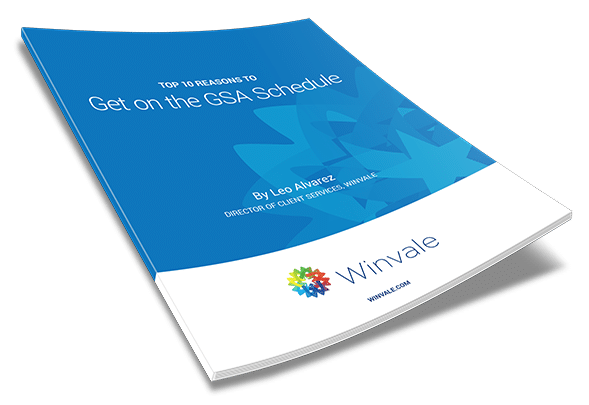Winvale Blog
The latest insights for government contracting success, GSA Schedule assistance, & IT Manufacturer support.
Steve serves as the Director of the Technology Resale division. Steve manages all aspects of Winvale’s GSA Schedule contracts. Steve also leads the company in RFP/RFQ responses where Winvale is the Prime Contractor. Responsible for over 60 manufacturers on Winvale’s GSA Schedule contracts, Steve insures that each manufacturer’s products or services are compliant and within scope of each GSA contract.

By:
Steve Young
November 16th, 2010
Many of you out there might be thinking to yourself, “There are so many opportunities for people and contractors who have security clearances…Maybe I should get one!” Not so fast—most people don’t realize that there are specific requirements that must be met in order to qualify for a security clearance. I’d like to take a moment to outline just a few of these requirements, the basic levels of clearance, and how these levels are granted. How do I qualify? To be eligible for a security clearance, the following conditions must be met: a) It has been determined by the U.S. government that you’re eligible for access to classified information; and b) you are sponsored by a government entity or a cleared contractor. In order to be sponsored, you must be employed by a cleared contractor (or hired as a consultant) and must be in a position requiring a clearance. These two conditions are important to remember.

Government Business Development | Government | Resources and Insight
By:
Steve Young
November 12th, 2010
With the recent Veterans Day holiday having already passed, I have been giving extra thought to those in the service and wanted to finish up my initial blog covering the effectiveness of Executive Order 13360. To recap, Executive Order 13360 or “the 21 Gun Salute initiative” was implemented by the General Services Administration (GSA) and aimed at meeting and exceeding the 3% federal contracting goal with SDVOSBs. Here’s what I found out. Did Executive Order 13360 work? (Part 2 – The Results) On my last blog I reported that the Department of Defense only spent 1.43% on SDVOSB Prime contractors (1.35% for Subcontractors) in 2009. This was just my first search, however, and was sure I would see much better results from the rest of our federal agencies. I mean, 3% isn’t that lofty of a goal, is it? Well, here’s how the rest of the results looked (Format of the table below is Agency, 2008 SDVOSB Prime Contracting Achievement, 2009 Goal, 2009 SDVOSB Prime Contracting Achievement)

Do you know what the real benefits of being on the GSA Schedule are? Learn the top 10 reasons (and advantages) why you should consider it.

By:
Steve Young
November 9th, 2010
The recent changes to the Women Owned Small Businesses (WOSB) Program were finalized and submitted to the Federal Register on October 7th. After analyzing data gathered from a study conducted by RAND Corporation on the representation of WOSBs in specific industries, the SBA found that 83 industries (segmented by the first 4 numbers in the NAICS code) were either underrepresented or significantly underrepresented. The new WOSB program requirements are only applicable to these industries. The contract value for each WOSB set-aside is not to exceed $5 million for manufacturing and $3 million for all other services and products and the WOSB set-aside requirement for total federal contracting dollars is 5%.

By:
Steve Young
October 22nd, 2010
Back in July, the SBA created an initiative which entailed creating 10 economic "clusters" (defined by the SBA as “collaborations between small businesses, the public sector, economic developers, and local institutions to advance a local industry sector”) that have been called “Innovative Economies.” Those small businesses awarded each received a cash grant of $600,000 which was given to each cluster’s organizing entity to build viable opportunities for the small businesses within each of the various clusters. Cluster development strategies are a tool for the promotion of the economic development in a region. SBA sought proposals from entities that lead regional cluster projects that will provide services to small businesses involved in clusters such as training, counseling, mentoring, technology transfer assistance and other services relevant to small businesses. The awardees were announced on September 20, 2010 and supported two types of innovative economies: Regional Innovation Clusters and Advanced Defense Technologies. These ten Innovative Economies include:

By:
Steve Young
October 17th, 2010
When submitting an offer to GSA, the overall process and interaction with GSA is typically consistent: 1) creation of offer, 2) submittal of the offer to GSA, 3) wait for the offer to be assigned to a GSA Contracting Officer, 4) engage in formal offer clarifications with the assigned CO, 5) negotiate offer terms and pricing with the Contracting Officer and, 6) receive a contract award!

Government Business Development | Technology | Resources and Insight
By:
Steve Young
October 13th, 2010
What is a Small business and how important are they to the US economy? Overshadowed every day by big business and constant media, Small businesses rarely get their share of attention and credit. Did you know Small businesses employ half of US workers and represent 99.7% of all employer firms? Yes, 99.7%! According to Office of Advocacy, there were 27.5 million Small businesses in the United States in 2009. Can you think of a more influential group?
Copyright Winvale | All Rights Reserved